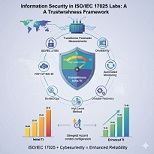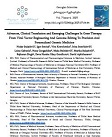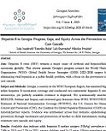A rational approach to the study of fractals and the effectiveness of systematic analysis for the functioning of flow management
Downloads
The paper discusses the issues and processes of fractal research, for the analysis of its further management development. Recommendations are given that focus on the main aspects of the fractal model of functioning. The ways of rational decision-making are studied, where the influence of environmental factors is emphasized, with the area of determining their negative (violation) and supporting effects. The point characteristics of fractals are analyzed in order to determine how they can cope with unforeseen expected "threats" or rationally use possible "benefits". To conduct such an analysis, the paper considers a wide group of environmental factors, where each of them separately includes relevant points that affect any type of activity differently - fractal layers and component points represent the internal characteristics of transmission. The paper focuses on one of the areas of improvement of the fractal management structure. In particular, on filling the existing linear-functional management structure with a target group, in terms of obtaining a final positive result. The corresponding functioning mechanism of such a structural scheme and the basic version of their mathematical model are given. The possibility of creating a group of target fractals to avoid the problem and the mathematical model of such a structure and its mechanism of action are discussed and achieved. It is noted that the crisis/contingency situation is not a separate independent problem, it is one of the slightly more complex features of the operation. Its sophistication is primarily expressed in the possible combinations of internal or external factors of the cause of the problem and the complexity of the analysis. Second, eliminating the problem created by side effects is a certain subgoal of the main goal. Its regulation and transfer should be purposefully implemented: by middle-level management; The entire process of management should be carried out by the forces associated with the purpose of transmission; created by the problematic target group-which would be a rational approach to a systematic analysis of the situation. With this approach, the goal of point calculation of fractals is decided.
Downloads
Б.Я. Лихтциндер, М.А. Кузякин, А.В. Росляков, С.М. Фомичов. (2000,). Интелектуальные сети связи. Москва,: Эко-Трендз.
Ю.Б. Зубарев, В.П. Дворкович, и др. . (2001). Мултимедия-проблемы и перспективы внедрения. Цифровая обработка телевизионных и компютерных сигналов. М.: связи.
Falconer, Kenneth . (2003). Fractal Geometry: Mathematical Foundations and Applications. Лондон: John Wiley & Sons. From ISBN 978-0-470-84862-3.
Liu, Jing Z.; Zhang, Lu D.; Yue, Guang H.. . (2003). "Fractal Dimension in Human Cerebellum Measured by Magnetic Resonance Imaging". Biophysical Journal. , 85 (6): 4041–4046.6. From Bibcode:2003BpJ....85.4041L. doi:10.1016/S0006-3495(03)74817-6. PMC 1303704. PMID 14
Copyright (c) 2024 Georgian Scientists

This work is licensed under a Creative Commons Attribution-NonCommercial-NoDerivatives 4.0 International License.










































































































































































































